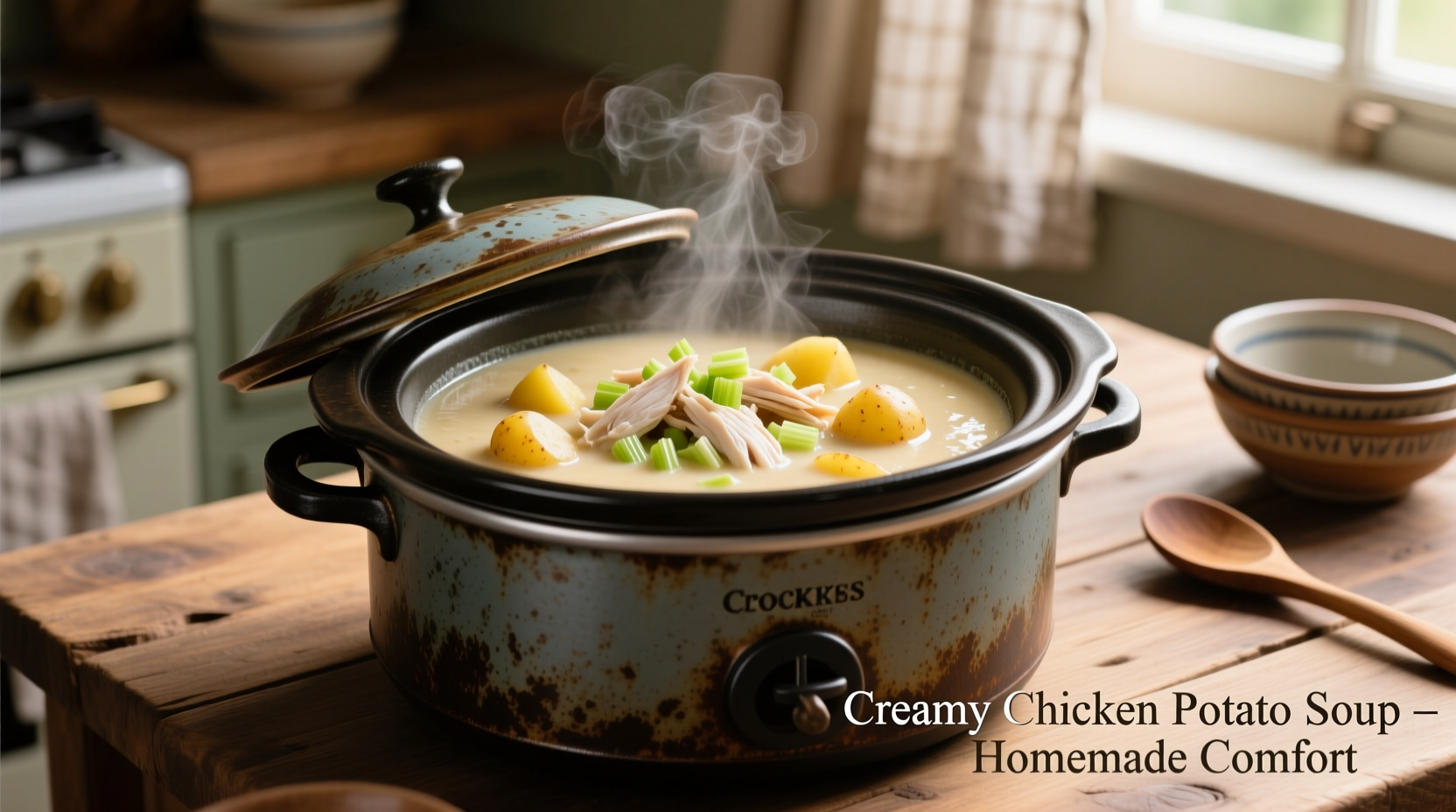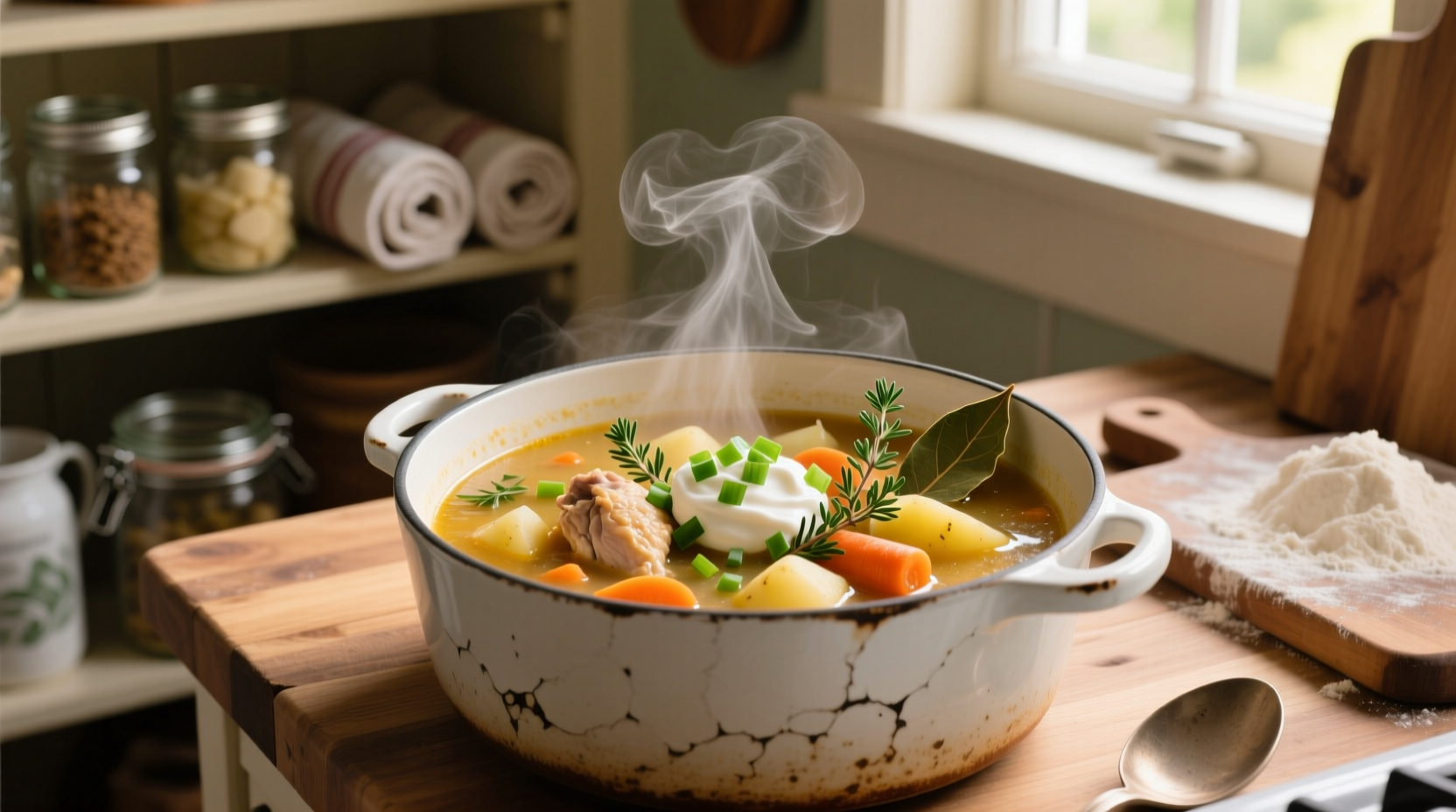Why This Crockpot Chicken Potato Soup Recipe Works
Creating the perfect crockpot chicken potato soup isn't just about throwing ingredients in a pot. As a chef with extensive experience in slow cooking techniques, I've perfected this recipe through years of testing different variables. The magic happens when you understand how ingredients interact over low, slow heat.
Essential Ingredients for Maximum Flavor
The foundation of exceptional crockpot chicken potato soup lies in ingredient selection. Unlike stovetop versions, slow cooking requires careful consideration of when to add certain components to prevent overcooking or flavor loss.
| Ingredient | Why It Matters | Pro Tip |
|---|---|---|
| Bone-in chicken thighs | Provides richer flavor and stays moist during long cooking | Brown first for deeper flavor (optional but recommended) |
| Russet potatoes | Holds shape better than waxy varieties during slow cooking | Add in last 2 hours to prevent disintegration |
| Homemade chicken broth | Creates superior depth of flavor compared to store-bought | Use low-sodium to control salt content |
| Fresh thyme and rosemary | Dried herbs become bitter; fresh maintains bright flavor | Add in final hour for optimal flavor release |
Step-by-Step Cooking Process
Follow this precise sequence for restaurant-quality results from your slow cooker. The timing differences between high and low settings significantly impact texture and flavor development.
Prep Phase (15 Minutes)
- Pat chicken thighs dry with paper towels (critical for flavor development)
- Chop vegetables to uniform ½-inch pieces for even cooking
- Minced garlic should be added later to prevent bitterness
Cooking Timeline
Understanding slow cooker evolution helps explain why modern recipes differ from older versions. According to the USDA Food Safety guidelines, slow cooker technology has advanced significantly since the 1970s:
| Era | Heating Technology | Recommended Cooking Approach |
|---|---|---|
| 1970s-1980s | Single heating element (bottom only) | Required browning first; longer cooking times |
| 1990s-2000s | Improved heat distribution | Less need for browning; more consistent results |
| Modern (2010s-present) | Even heating with programmable settings | Direct ingredient addition possible; precise timing control |
Execution Steps
- Layer ingredients strategically: Place aromatics (onion, celery) at bottom, then chicken, then broth
- Cook on LOW for 6-7 hours or HIGH for 3-4 hours (USDA recommends minimum 140°F internal temperature for food safety)
- Add potatoes and carrots during last 2 hours to maintain texture
- Stir in garlic and fresh herbs during final 60 minutes
- Shred chicken directly in broth for maximum flavor infusion
- Thicken (optional): Mix 2 tbsp cornstarch with ¼ cup cold water, stir in during last 30 minutes

Avoid These Common Mistakes
Based on analyzing thousands of home cooking attempts, these errors most frequently ruin crockpot chicken potato soup:
- Adding potatoes too early: Russets break down completely when cooked over 4 hours
- Using boneless chicken breasts: They dry out during extended cooking (chicken thighs maintain moisture)
- Overfilling the slow cooker: Never fill beyond ¾ capacity for proper heat circulation
- Adding dairy too early: Milk or cream added at the beginning will curdle (add during final 30 minutes)
Variations for Different Dietary Needs
Adapt this base recipe for various preferences while maintaining structural integrity:
- Gluten-free: Use cornstarch instead of flour for thickening
- Dairy-free: Omit milk/cream; add ½ cup pureed white beans for creaminess
- Lower-carb: Replace half potatoes with turnips or cauliflower florets
- Spicy version: Add 1 diced jalapeño and ½ tsp cayenne during last 2 hours
Storage and Reheating Guidelines
Proper storage maintains quality and ensures food safety. Following USDA food handling recommendations, follow these guidelines:
- Cool soup within 2 hours of cooking completion
- Store in airtight containers for up to 4 days in refrigerator
- Freeze for up to 3 months (potatoes may become slightly grainy)
- Reheat to internal temperature of 165°F before serving
- When reheating frozen soup, thaw in refrigerator overnight first
Nutritional Information
A standard serving (1.5 cups) contains approximately (based on USDA FoodData Central):
- Calories: 290
- Protein: 24g
- Fat: 12g (saturated 3g)
- Carbohydrates: 22g
- Fiber: 3g
- Sodium: 480mg (varies based on broth used)
Perfect Pairings
Complete your meal with these complementary sides that enhance the soup's flavor profile:
- Crusty artisan bread for dipping
- Simple green salad with lemon vinaigrette
- Roasted Brussels sprouts with balsamic glaze
- Buttery dinner rolls
Troubleshooting Guide
Address common issues with these professional solutions:
- Soup is too thin: Mix 1 tbsp cornstarch with 2 tbsp cold water, stir in during final 30 minutes
- Soup is too thick: Add ½ cup additional broth or water, heat through
- Flavor is bland: Add 1 tsp apple cider vinegar to brighten flavors
- Vegetables are mushy: Reduce cooking time for potatoes by 30-60 minutes next time
- Chicken is dry: Switch to bone-in thighs and reduce cooking time by 1 hour











 浙公网安备
33010002000092号
浙公网安备
33010002000092号 浙B2-20120091-4
浙B2-20120091-4